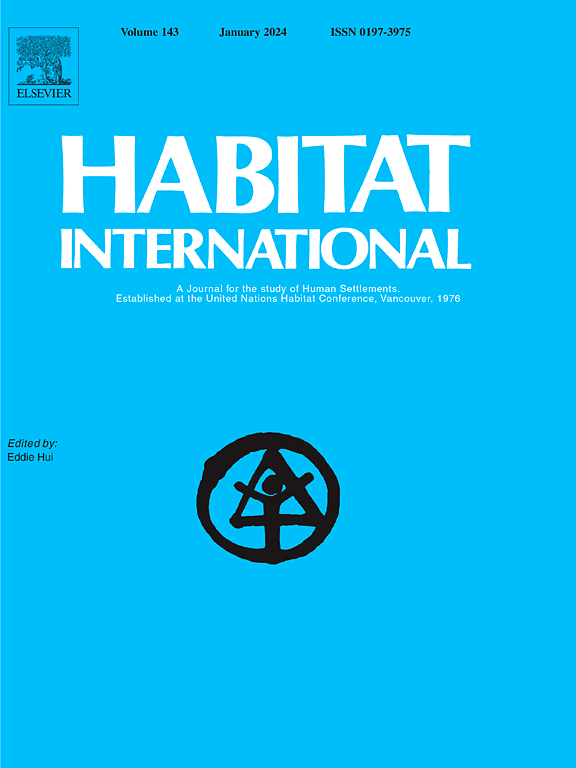Dissecting the nonlinear economic implications of urban extreme thermo-environment using a Monte Carlo simulation-based ensemble learning model
IF 6.5
1区 经济学
Q1 DEVELOPMENT STUDIES
引用次数: 0
Abstract
Numerous scholarly inquiries have indicated tangible urban amenities including structural and locational variables potentially contribute to housing prices, but intangible urban detriments characterised by environmental indices and their implicit economic implications remain largely unexplored. Escalating extreme heat events in cities, it is essential to delve into the observation of dissecting the nonlinear interplay between urban extreme thermo-environment (UETE) and housing prices. Consequently, we developed a theoretical framework to dissect the impacts of UETE on housing prices. Taking Shanghai as a testbed, UETE via percentile-based methods was estimated using remote sensing data from an intra-urban perspective. Moreover, a Monte Carlo Simulation-based interpretable ensemble learning from a hedonic perspective was proposed to examine its ramifications on housing prices. The results revealed the heterogeneous economic implications of hedonic determinants. The structural and locational variables, i.e., a south-facing orientation, middle floor levels, equipped elevators, proximity to the city centre, public transportation accessibility, prosperous economic activities and high-quality school districts exert positive impacts on housing prices whereas the environmental factors such as UETE exhibited negative influences on property values. For an increment of 1 °C in UETE from −3 °C to +0.0 °C, the property values will experience a decrease of 1250.15 RMB/m2. Once the mean UETE reaches the [+0.0 °C, +1.5 °C] threshold range, there is a significant diminishing marginal utility because of the trade-offs between environmental performance and property values. Intriguingly, as the mean UETE surpasses the +1.5 °C, the property values encounter a second reduction. Furthermore, the differences between housing prices inside UETE of varied typologies and those outside UETE were explored. The heterogeneous implicit economic implications of UETE underscore the necessity of making policies adapted to the unique idiosyncrasies of individuals, to alleviate the severe challenges of climate change towards the housing market.
利用基于蒙特卡罗模拟的集成学习模型剖析城市极端热环境的非线性经济影响
许多学术调查表明,包括结构和位置变量在内的有形城市便利设施可能会影响房价,但以环境指数为特征的无形城市损害及其隐含的经济影响在很大程度上仍未得到探索。随着城市极端热事件的不断升级,深入研究城市极端热环境与房价之间的非线性相互作用至关重要。因此,我们开发了一个理论框架来剖析ute对房价的影响。以上海市为试验基地,利用遥感数据,从城市内部视角,采用基于百分位数的方法估算UETE。此外,提出了一种基于蒙特卡洛模拟的可解释集合学习,从享乐主义的角度来研究其对房价的影响。结果揭示了享乐决定因素的异质性经济含义。结构和位置变量,如朝南朝向、中间楼层、配备电梯、靠近市中心、公共交通可达性、繁荣的经济活动和高质量的学区,对房价产生积极影响,而环境因素,如UETE,对房地产价值产生负面影响。从−3°C到+0.0°C, UETE每增加1°C,物业价值将减少1250.15元/平方米。一旦平均UETE达到[+0.0°C, +1.5°C]阈值范围,由于环境绩效和财产价值之间的权衡,边际效用显著递减。有趣的是,当平均UETE超过+1.5°C时,属性值遇到第二次降低。此外,我们还探讨了不同类型的经济技术开发区内与经济技术开发区外房价的差异。UETE的异质性隐含经济影响强调了制定适应个人独特特质的政策的必要性,以减轻气候变化对住房市场的严峻挑战。
本文章由计算机程序翻译,如有差异,请以英文原文为准。
求助全文
约1分钟内获得全文
求助全文
来源期刊

Habitat International
Multiple-
CiteScore
10.50
自引率
10.30%
发文量
151
审稿时长
38 days
期刊介绍:
Habitat International is dedicated to the study of urban and rural human settlements: their planning, design, production and management. Its main focus is on urbanisation in its broadest sense in the developing world. However, increasingly the interrelationships and linkages between cities and towns in the developing and developed worlds are becoming apparent and solutions to the problems that result are urgently required. The economic, social, technological and political systems of the world are intertwined and changes in one region almost always affect other regions.
 求助内容:
求助内容: 应助结果提醒方式:
应助结果提醒方式:


